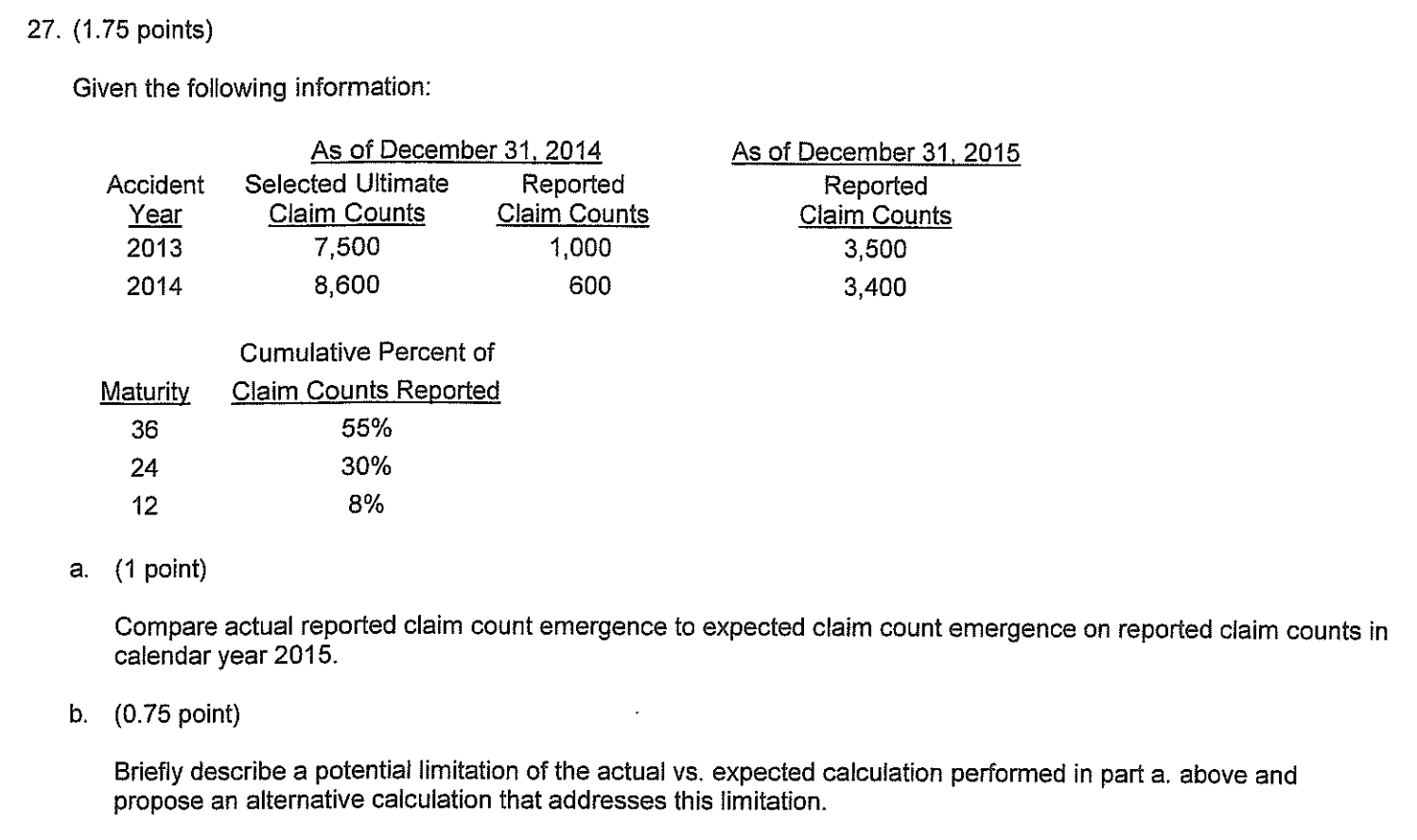Fall 2016 Q27b)
I am not understanding the solution. In general, I can understand the limitations but I do not understand the alternative calculations in sample answer 2-4.
Sample answer 2: is the solution suggesting you project closed claim counts to ultimate and compare those ultimates to the selected ultimates? And instead of using reported claim count cdfs, use the closed claim count cdfs, replacing the selected ultimates with paid claim count ultimates?
Sample answer 3: isn't a change in number of small claims similar to sample answer 5? I thought Berq Sherman method adjusts for changes in settlement rate, while for changes in settlement of small/large claims you should separate data into small/large claims and apply BS adjustment to each group
Sample answer 4: what is an incremental closed method? Using CDR to estimate incremental closed counts as we do in FS method?
Apologies for the long question, overall I would like further clarification.


Comments
For sample answer 2:
For sample answer 3:
For sample answer 4:
For sample answer 5:
Final Comment on this exam question:
Thank you for taking the time to respond and the tips at the end, I will keep them in mind :)
You're welcome! 🙂